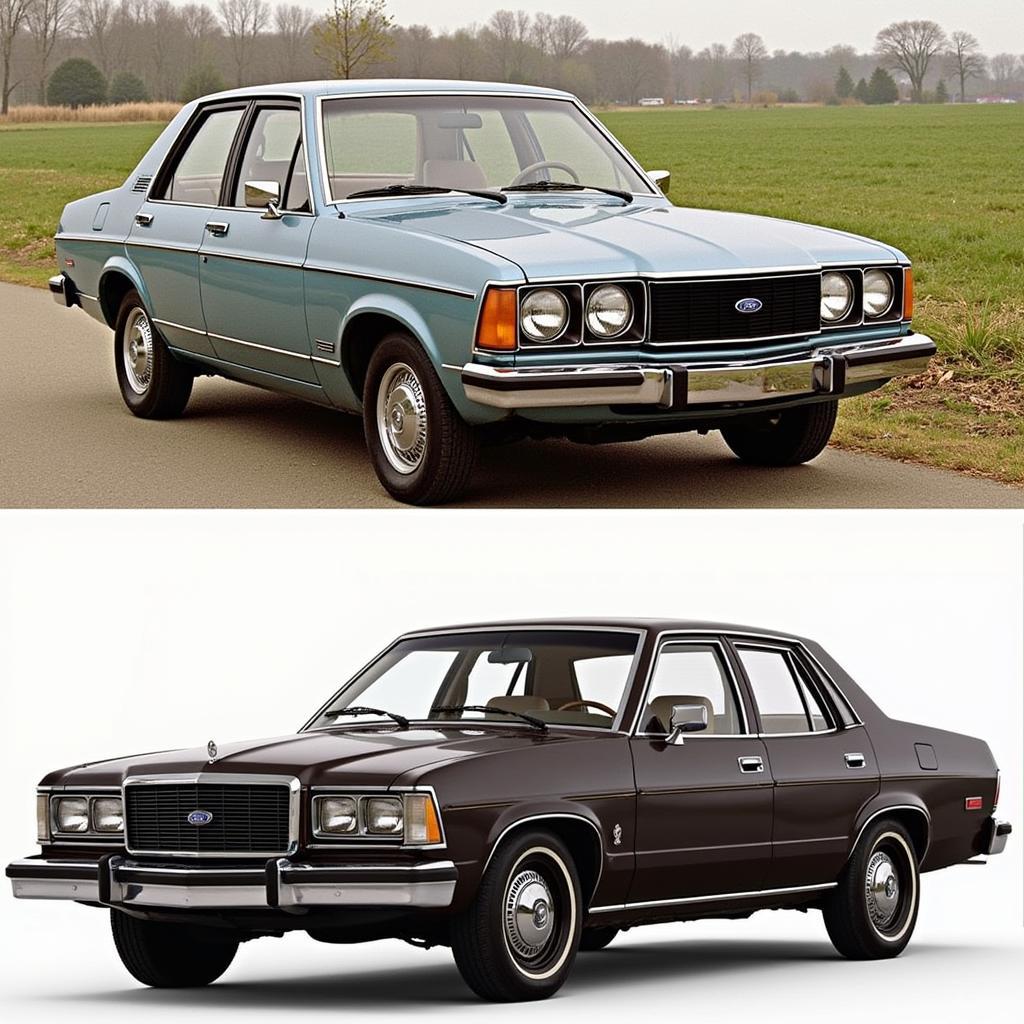The Ford Granada, a name that resonates with automotive history, represents a significant era in Ford’s production line. From its European origins to its later American adaptations, the Granada offers a fascinating study in automotive evolution and varying market demands. This guide delves into the history, variations, and lasting impact of Ford Granada cars.
Exploring the History of Ford Granada Cars
The Ford Granada story begins in Europe during the early 1970s. Intended as a replacement for the aging Ford Zephyr and Consul models, the Granada offered a blend of luxury and performance. Its initial release saw a range of body styles including a four-door saloon, a two-door coupé, and a five-door estate, catering to a wide spectrum of consumer needs. The Granada quickly gained popularity, becoming a symbol of executive motoring in many European countries. The Granada’s robust engineering and refined styling cemented its position as a flagship model for Ford in Europe.
The Granada’s success in Europe led Ford to consider introducing a similar model to the American market. However, the American automotive landscape was different, with a preference for larger, more powerful vehicles. This resulted in a different approach for the American Granada.
The American Ford Granada: A Different Approach
The American Ford Granada, introduced in 1975, took a different path from its European counterpart. Smaller and more fuel-efficient than other full-sized American cars of the time, the Granada was positioned as a compact yet stylish alternative. It shared its platform with the Ford Maverick and offered a variety of engine options, focusing on practicality and affordability. While not directly related to the European Granada, it borrowed styling cues to evoke a sense of European sophistication.
 Ford Granada American Model 1975
Ford Granada American Model 1975
This strategy proved successful, with the Granada becoming a popular choice for American buyers seeking a more economical and manageable vehicle without sacrificing style. It offered a balance between the larger, traditional American cars and the smaller import models gaining traction in the market.
Comparing the European and American Ford Granadas
The European and American Granadas, while sharing a name, represented distinct approaches to automotive design. The European Granada emphasized luxury and performance, catering to a market that valued refined driving experiences. Conversely, the American Granada prioritized fuel efficiency and affordability, reflecting the prevailing economic climate and consumer preferences in the United States. This divergence highlights how automotive manufacturers adapt their models to suit specific market demands.
Key Differences Between the Models
- Size: The European Granada was significantly larger than the American version.
- Engines: European Granadas offered larger, more powerful engine options compared to the American models.
- Features: The European Granada typically included more luxurious features and appointments.
- Target Market: The European Granada was aimed at the executive car market, while the American Granada targeted a broader, more budget-conscious audience.
Ford Granada: Lasting Legacy and Collector Interest
Despite its discontinuation, the Ford Granada retains a loyal following among car enthusiasts. Both the European and American versions have garnered collector interest, each appealing to different segments of the classic car community. The European Granada is often appreciated for its sophisticated design and powerful performance, while the American Granada is valued for its affordability and its representation of a specific period in American automotive history.
 Ford Granada Enthusiast Meet
Ford Granada Enthusiast Meet
“The Granada, especially the European models, offered a level of refinement not often seen in Fords of that era,” says John Peterson, a classic car expert and historian. “They were well-built, comfortable, and offered a compelling driving experience.”
Conclusion: A Tale of Two Granadas
The Ford Granada’s history presents a compelling story of automotive adaptation and market segmentation. From its European roots as a luxury executive car to its American reincarnation as a compact and fuel-efficient option, the Granada’s legacy is one of versatility and adaptability. Whether you admire the European elegance or the American practicality, the Ford Granada remains a significant chapter in Ford’s automotive history.
FAQ
- Were European and American Granadas built on the same platform? No, they were built on different platforms.
- What was the most powerful engine available in a European Granada? Depending on the year and model, it ranged from a 2.8L V6 to a 3.0L V6.
- When was the American Granada discontinued? Production of the American Granada ended in 1982.
- Are Ford Granada parts still available? Yes, parts are still available through various suppliers and online retailers.
- What is the average price of a classic Ford Granada? Prices vary depending on the model, condition, and year.
Need Help with Your Ford or any other vehicle?
If you require assistance with your vehicle diagnostics, please don’t hesitate to contact us.
WhatsApp: +1(641)206-8880
Email: [email protected]
Address: 276 Reock St, City of Orange, NJ 07050, United States
We have a 24/7 customer support team ready to assist you.


